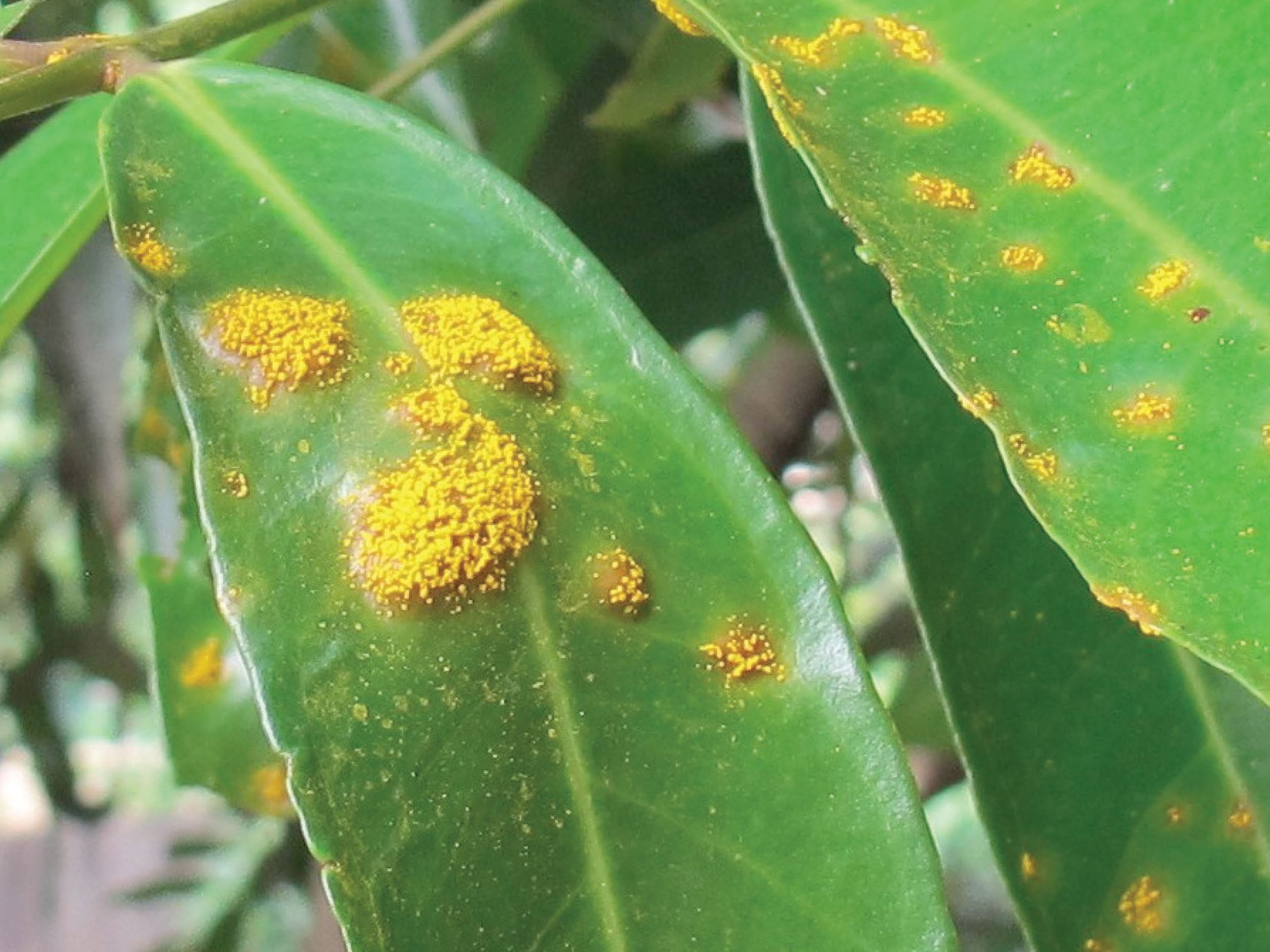Myrtle rust pathogen, Puccinia psidii, spreading in South Africa 2015-02-27

The non-native rust pathogen of Eucalyptus and other Myrtaceae, Puccinia psidii, was first reported from a single tree in a garden on the KwaZulu-Natal South Coast of South Africa in May 2013. Despite surveys in the area and awareness campaigns in newsletters no other reports of the pathogen in that area have been received.
During a survey of cycad diseases in the Wolkberg Wilderness Area near Tzaneen, Limpopo Province, two native Eugenia sp. plants with P. psidii were discovered in late July 2014. Follow-up surveys in the area have confirmed the presence of the pathogen on more than 10 Eugenia plants in the Wolkberg and New Agatha areas near Tzaneen. Some plants were showing leaf and shoot death as a result of the infection. Most recently, in February 2015, P. psidii was discovered on an ornamental Australian plant, Backhousia citriodora, in a garden in Centurion, Gauteng.
Puccinia psidii, the myrtle rust pathogen, has been known from Brazil and other South and Central American countries for several decades. It was discovered more than 100 years ago, but gained notoriety when it started affecting commercially grown allspice (Pimenta dioica), guava (Psidium guajava) and Eucalypt species. In recent years the fungus has spread to multiple regions globally, including the USA (Florida, 1977), Hawaii (2005) and Australia (2010).
Infection of plants results in leaf spot, necrosis of leaves, shoot, flower and fruit infections, resulting in death of affected plant parts. When producing urediniospores, the pathogen and its disease is easily identified by the masses of yellow spores in the lesions and on affected plant parts. In some cases, cream to white telia may also be observed. Brazil initiated extensive breeding and chemical spray programmes to manage the pathogen on eucalypts. However, in Australia where the pathogen occurs on more than 100 native myrtaceae species in their natural environment, the extinction of key plant species is expected.
The threat of P. psidii to South Africa is considerable. We have several native Myrtaceae (Eugenia, Syzygium, Metrosideros species) and multiple industries cultivating non-native Myrtaceae (Eucalypts, guava). Based on experiences from other countries, the impact to our already threatened native ecosystems and to these industries can be significant.
We encourage you to spread information on this important pathogen as wide as possible and to report any possible sightings of the disease to Prof. Jolanda Roux at FABI. Images of typical symptoms can be seen on the photographs and in the attached report of the pathogen in the country.


